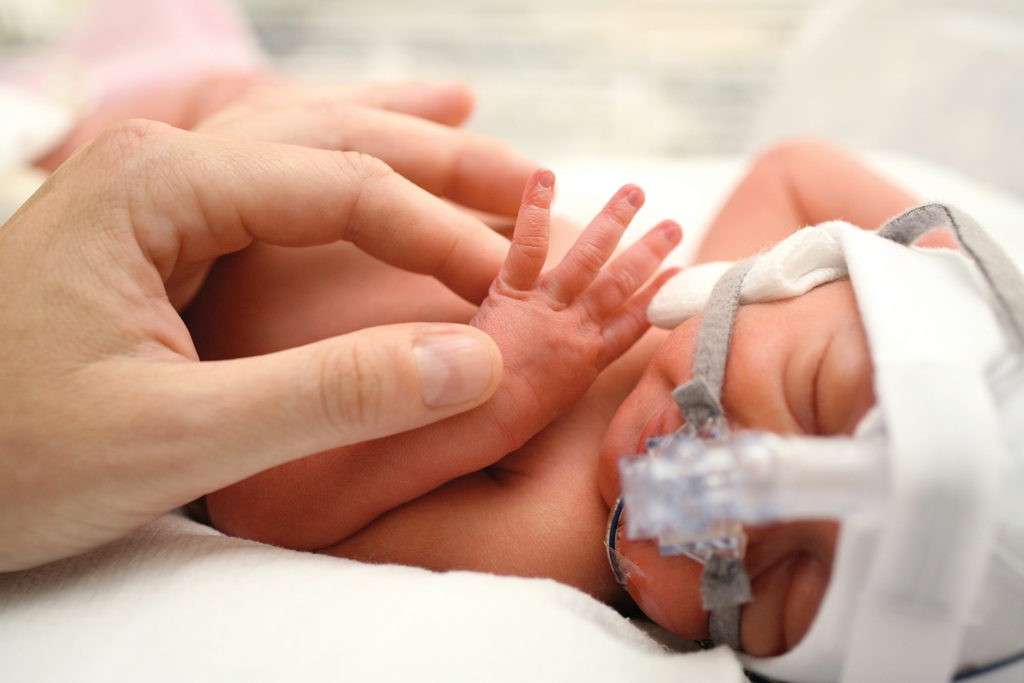You’ve Come a Long Way Baby!

In 1963, a young mother clung to the hope that her tiny son would survive. Born 5 ½ weeks premature and weighing 4 pounds 10 ounces, the nation was transfixed on the baby’s desperate struggle to survive. The baby, baptized Patrick Bouvier Kennedy, son of President and Mrs. Kennedy was the first baby born to a sitting president and first lady since the 19th century, and a baby whose short life would fuel the advancement of modern care for premature infants.
Within moments of birth, the baby struggled to breathe. The attending physicians certified a diagnosis of what was then called hyaline membrane disease (HMD) and now called infant respiratory distress syndrome (IRDS). It was a disease which “took the lives of half of the 50,000 babies that contracted it each year,” reported a New York Times article at the time. The newspaper quoted a physician who explained the disease and how the airways of such infants were covered with a mucous substance which interferes with oxygen getting to the lungs.
The doctors knew the magnitude of the situation. The public did not. The Boston Globe ran an article about the Kennedy baby, its headline “He’s a Kennedy; He’ll Make it.” And with the best care and all the world’s hope and prayers, it was easy to believe he would.
It soon became clear that the care needed was not available at the Cape and arrangements were made to transfer Baby Patrick to a more suitable facility. Before leaving, the President wheeled the isolette into the First Lady’s room and she held the small infant’s hand for 10 short minutes – the last she’d see him alive. Baby Patrick was rushed to Boston where he received the best possible care utilizing the most advanced technologies available of which, for preterm birth, were few. In 1963, one of the newest interests of medical researchers was the hyperbaric chamber. At the time, Boston Children’s Hospital was using it to treat Blue Babies – those born with congenital heart defects which deprives them of oxygen. The hospital had tried the treatment for other preterm babies two or three times before without success but had little other recourse. It was a long shot, but one they had to take.
The President stood watch outside the 31-by-8 foot steel chamber and looked at the figure of his tiny son through the small glass window. The doctors discussed the risks with the President which included blindness, but these he did not have to wait long. Baby Patrick died in the early hours of August 9th.
Just a few months later, news of Patrick’s death would be massively eclipsed by the dreadful day of President Kennedy’s assassination. Patrick’s story was soon forgotten by many, but his short life sparked a huge surge of interest in research on prematurity.
Building On Discovery
In 1929, Kurt von Neergaard performed experiments that suggested the presence of pulmonary surfactant and its importance to a newborn’s first breath. That information led to a greater understanding of the physiology surfactant as John Clements and Chris Macklin worked on the effects of nerve gases on the lungs. Five years later, Mary Ellen Avery and Jere Mead published evidence that preterm babies dying of HMD had a deficiency of pulmonary surfactant.
For the next decade, research in neonatal care stalled. National and medical interest was revived when Patrick’s death put preterm birth in the spotlight and shortly after the first trials of nebulized synthetic surfactant to prevent respiratory distress syndrome were soon published. The trials proved unsuccessful, but research continued. In the 1970’s Goran Enhorning and Bengt Robertson demonstrated success with natural surfactants containing protein in an immature rabbit model. Forty years would elapse between initial discovery and the approval of synthetic surfactant in the 1990’s.
It Is Hard To Even Imagine
In a time when nearly every day brings new scientific insight, it is hard to imagine just how much treatment for premature infants has changed in a relatively short time. It was not until around 1922 that the first neonatal intensive care unit appeared in an American hospital, but even then there were few interventions for babies born too soon other than keeping them warm and the air humid. Most babies were sent home without intervention.
Since that time there have been many changes, including that of the use of surfactants, such as improved isolettes that administered oxygen but removed carbon dioxide, mechanical ventilation, and the use of steroids. Back in 1963, a baby like Patrick Kennedy’s prognosis was grim having a less than 10% chance of survival. Had Patrick been born today, his chances of survival would be 95% or greater.
Despite the many advances in the care of premature babies, there is still no consensus or clear path in the optimal treatment of the many issues they face such as underdeveloped brain, lungs, and bowels – or how to improve one system without compromising another.
More Work To Do
As a nation, the United States ranks among the best in health care and ranks high on the Human Development Index (HDI), which measures a nation beyond economic capacity and includes the dimensions of long and healthy lives, knowledge, and standard of living. In collaboration with the March of Dimes and other advocacy groups, the World Health Organization published an article titled Born Too Soon, the Global Action Report on Preterm Birth in an effort to shed more light on the seriousness of this global concern. According to this article, though the U.S. ranks 8 of 49 on the HDI, infant mortality in the U.S. is much higher than in many of the other countries 9th-49th. A large percentage of the deaths come in large part from preterm births and remains a significant contributor to long-term disabilities.
In response to this, the article suggests the medical community, legislators, and the public advocate for the following:
- Increasing resources for preterm infant interventions in proportion to the burden of healthcare expenditures, especially in the first year of life when deaths from the complications of preterm birth are highest.
- Similarly, increasing resources for research around preterm infant care needs to receive proportional attention to advance neonatal science.
- Ensuring evidence-based interventions for preterm infants are accessible to all. These interventions should include affordable access for all preterm infants to early neonatal tertiary care, post-discharge primary and specialty care, and early intervention services.
- The families caring for these infants. The burden of caring for a preterm infant goes beyond the economic impact and must also include providing resources to support the family in managing the psychological effects of having a preterm infant who may have lifelong special needs.
The care of preterm infants has indeed come a very long way in a very short time. There is, however, room for even more exciting advances. While eliminating all preterm births is highly improbable, a combination of advocacy continued research and development of new treatments, and widespread public health and education programs have the potential to have a significant and measurable impact on preterm births. Healthy Kansas City looks forward to highlighting every effort.









